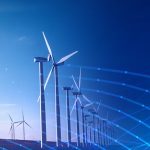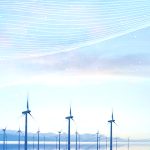Renewable energy trends in 2023
In 2023 the clear goal is to obtain a rapid transition into clean energy and enable new developments towards it. The biggest goals are reducing emissions, lowering energy costs and being more eco-friendly in general. To ensure more success towards those goals, companies started to invest in Artificial Intelligence, Big data, and the Internet of Energy (IoE). Even though renewable energy sources such as wind, solar and hydroelectricity are not an inventions, huge developments have been made over the years. Renewable energy sources give a competitive advantage in the new business era.
So, what are the top renewable trends in 2023?
Research has shown that renewable energy trends will impact companies the most in 2023. Western Europe is where most of these companies are situated.
Higher energy efficiency is provided through advanced photovoltaics (PV). Smart management for renewable energy is dictated by Artificial Intelligence and the use of Big Data. Bioenergy isn’t necessarily a new trend, but it remains popular because of its decentralised nature.
Advanced Photovoltaics:
To minimise the usage of additional land, solar companies are opting for PV systems. Startups in the industry are developing thin-film cells to make solar panels more flexible, cost-efficient and environmentally friendly. Moreover, innovations in PV materials and photovoltaic designs ensure maximum efficiency and productivity. All of this promotes widespread sustainability.
Artificial Intelligence and Big Data:
Artificial Intelligence is extremely important in the renewable energy sector because it includes power consumption forecasting. Because of innovations in cloud computing, virtual power plants supplement power generation.
Distributed energy systems:
The goal of distributed energy systems overcome irregularity in production. Examples are flow batteries because they leverage low and consistent energy. Capacitors and super-capacitors are used for applications that require large amounts of energy in a shorter period.
Hydropower:
Hydropower means energy derived from moving water. Innovations in that sector are connected to energy converters and component improvements for energy gathering. There is also the Ocean Thermal Energy Conversion which gathers energy from the thermal gradient that is between the surface and the deep waters.
Grid integration:
This includes transmission, distribution, and stabilisation of renewable energies. Here we have Gallium Nitride (GaN) and Silicone Carbide (SiC) as grid electronic technologies that prove to be efficient. Even though technologies are there, the stabilisation of the grid is still a huge problem.
Advanced Robotics:
Robotics are there to ensure maximum efficiency and optimisation. An example is automated solar panels that maximise energy conversion. Another great example is drones that go for inspection during work and ensure maximum safety for people working in the renewable energy sector.
Whichever trend you choose to explore, you cannot go wrong. Renewable energy is here to stay for the long run. Let us make our planet as eternal as possible.

